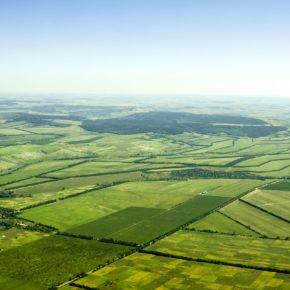
Posted on: 06. 15. 20
One of the ways the oil and gas industry has risen to the top is through the help of landowners who have granted production companies rights to mine on their property. While production facility managers and their crew know the industry from the inside out, most landowners are dubious to allow us to work on their land.
In order to successfully acquire essential permission to drill on land, your team must be prepared to answer any questions a landowner may have. Here’s a look at four of the top questions landowners ask about their rights and how you can put their minds at ease with the most accurate answers.
How Long Will A Lease Last?
The length of an oil and gas lease is based on both primary and secondary terms. The primary term is something the production company and landowner will negotiate as a set date where mining should end. This can be five years from the lease signing, or even ten years. Once again, this is purely up to the landowner and the negotiations surrounding the property.
A lease can move into a secondary term that could extend for a longer period of time. Should the oil production company see that the land is particularly fruitful, they will attempt to procure a secondary term with the landowner. We recommend that owners are walked through each aspect of a secondary term in order to ensure that there are no misconceptions about the mining capabilities of the company at the end of the day.
Do I Retain Control of My Land?
As a landowner, they retain control over where activity happens on their property. From the placement of equipment like natural gas coolers to mass installations of pipelines. Usually, these terms are negotiated between the landowner and the production company. These final terms would be included in the landowner’s addendum that we discussed earlier.
What Documents Should I Expect?
The three key documents to look out for as a landowner are:
- An oil and gas lease
- A memorandum of the lease
- An addendum prepared by your attorney that serves as your protection while under the lease
- An order for payment that states the bonus a landowner receives for the company to work on their land
An oil and gas company working on someone’s land truly wants a win-win situation for everyone involved. The documents drafted at the beginning of a lease agreement are in place to ensure that all parties get a fair share of the profits of the land.
What Exactly Are My Royalties?
A landowners’ royalties are determined as either a net or gross payment. Net meaning, there are substantial deductions before royalties kick in, and gross, meaning there are very few deductions involved.
It’s important that they review their lease with you before signing in order to ensure their understanding of how your royalty system works.
In addition to royalties, landowners are also compensated for:
- The location of a well pad on the property
- Pipeline right-of-way
- The number of wells on a property
Successfully Manage New Sites With Pro-Gas, LLC
If your production company is ready to branch out and try to excel in the current climate, Pro-Gas, LLC has the equipment and experience you need to succeed. Contact us today to learn more about our quality services and get the most up-to-date information on the oil and gas industry.


